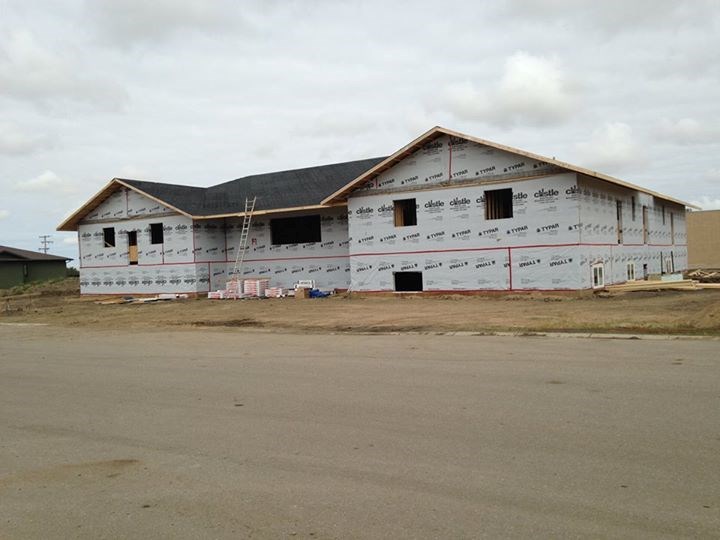It’s been a long road for the Northeast Outreach and Support Services (NEOSS) domestic violence shelter in Melfort, especially since progress was derailed in a November fire. Now, they’re looking at an opening date of February 2016.
Initial proposals for the shelter were drafted in 2010 because the nearest shelters are over an hour away and the Prince Albert shelter, at least, is at 90 per cent capacity.
“A women’s shelter is something the organization has known there has been a need for in the community for years and years,” said Louise Schweitzer, the executive director for NEOSS.
The organization got the funding in March of 2013 from the provincial and federal governments. The building will have 16 beds for individuals or families, places for group work, and an administration portion. The shelter will take individuals and families and while the shelter predominantly serves the northeast portion of the province (such as Wadena, Kelvington, Hudson Bay, and more) they won’t turn anyone away for being from elsewhere in the province.
“Some awareness was needed (in the community),” Schweitzer said. “Overall, the community was receptive.”
The building was about 80 per cent completed when it was devastated by a fire at the end of November last year. According to Schweitzer, giving up was never a consideration.
“The building went away, but the need never did,” she said.
The insurance claim was processed, some of the building was salvaged, and construction will continue when the weather gets warm enough.
Schweitzer added that over the course of the project, the community has been very helpful with fundraising and raising awareness.
“The support we received from our community from financial, emotional, volunteerism, was overwhelming,” Schweitzer said. “The care and compassion that our community offered to the board and staff will never be forgotten. There is no way to say thank you.”
The women’s shelter benefits women from Humboldt and the surrounding area because Partners Family Services plans on sending women in need there.
“Often, shelters across the province are at maximum capacity, and when we work with someone who needs to leave a violent relationship or situation, it can be very difficult if there is a waiting period to access space, if the shelter is a long distance away, or if they have children,” said Rachel Trann, executive director of Partners. “This shelter is also a sign that the government of Saskatchewan and supporters in the province are acknowledging the issue of violence against women and recognizing the need for more services.”
You may think of domestic abuse being more prevalent in densely populated areas, but both Schweitzer and Trann said there’s definitely a need for these shelters in rural areas as well. According to Schweitzer, Saskatchewan’s domestic abuse rate is twice the national average.
“Domestic violence … crosses socioeconomic boundaries,” Schweitzer said. “It’s about power and control. It’s not age specific. It sees no boundaries in the effect it has on people.”
Trann added that those who need help in rural areas are isolated and have more difficulty accessing services.
Anybody in the area who needs to go to a shelter, contact Partners and they will help support and inform, as well as answer any questions.



